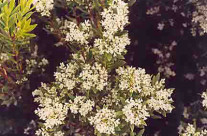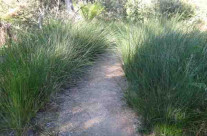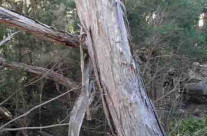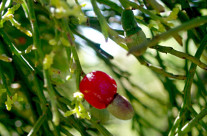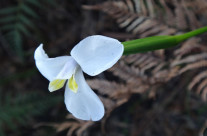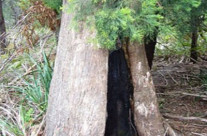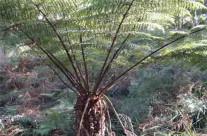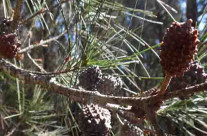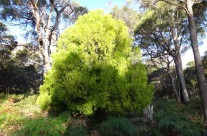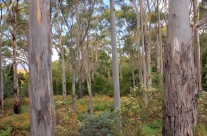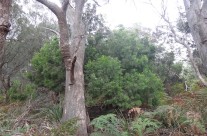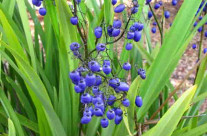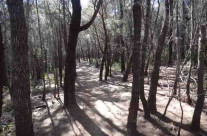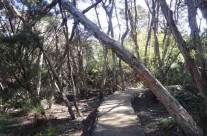The River-Forest section of the Bridport Walking Track can be classified as a dry sclerophyll (coastal) forest. There is a diverse plant community with eucalypts, blackwood, and a multilayered understorey of trees: acacias, sheoaks, dogwood, native cherry, tea tree and smaller shrub species such as banksias and prickly box. The leaves of many plants in the forest are hard, short and often spiky.
“The River-Forest area is home to a number of threatened vegetation communities. These are Eucalyptus amygdalina coastal forest, Melaleuca ericifolia swamp forest, and Riparian Scrub.”
- The Black Peppermint ( Eucalyptus amygdalina) is endemic to Tasmania and a dominant tree on the River-Forest track. It is known for its rough bark and narrow peppermint scented leaves when crushed.
- White gum ( Eucalyptus viminalis), are dominant on the river reserve near the Ada Street shelter. Alongside the river there are moisture-loving herbs, ferns, sedges, rushes and reeds. Paperbark swamplands occur where the Brid River flows into Anderson Bay. A riparian corridor with dense plantings of a range of small native trees and shrubs is important to the restoration of the Riparian reserve. Riparian revegetation practices helps stabilise the river banks, reduce erosion, improves water quality and flows, preserves habitat for aquatic species, and encourages biodiversity.
- The Native Cherry ( Exocarpus cupressiformis) tree is a semi-parasitic plant. It attaches to the roots of the dominant black peppermint eucalypt trees around it. It is an attractive conical shaped tree with bright green dense foliage.
- The Swamp Paper Bark ( Melaleuca ericifolia) revegetation project is helping to protect these last remaining communities.
- The Sheoak ( Allocasuarina littoralis ) ‘closed’ forests are remarkably quiet. It is the most drought resistant tree in Tasmania. The needle like foliage is a dull dark grey. The fallen needles create a soft cushioning mat.

